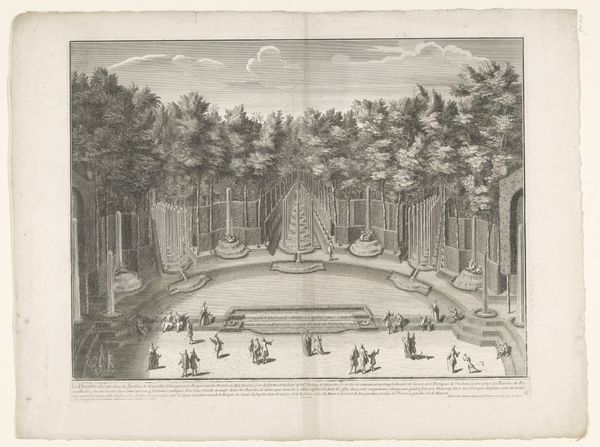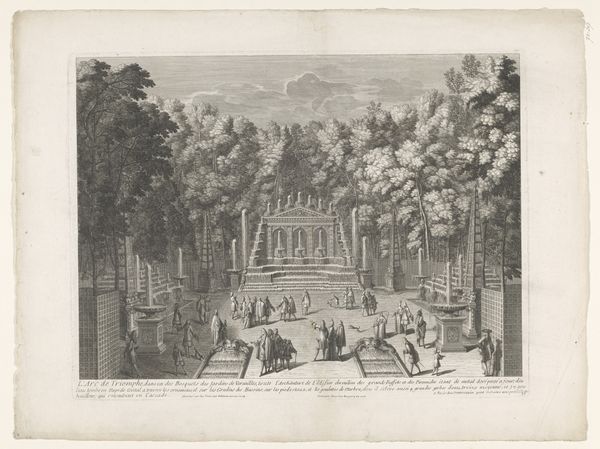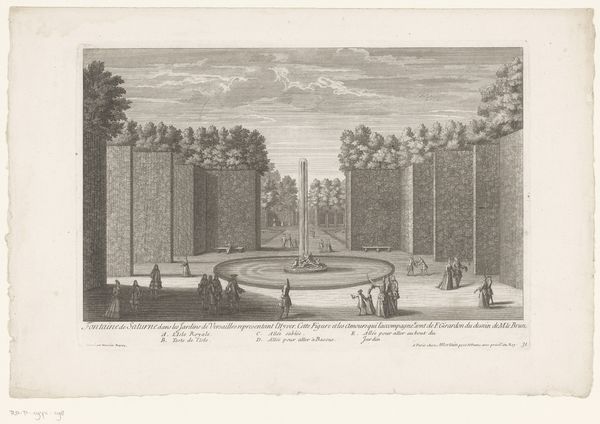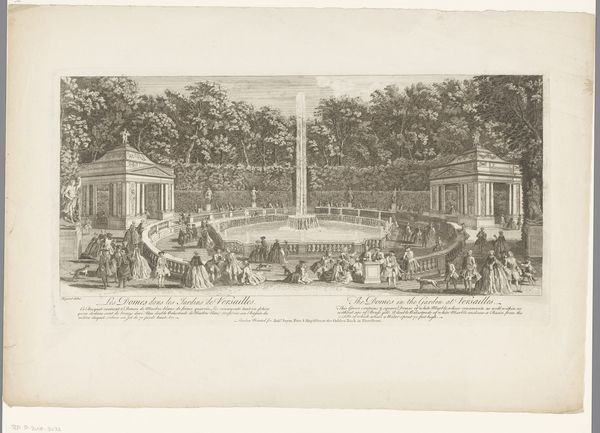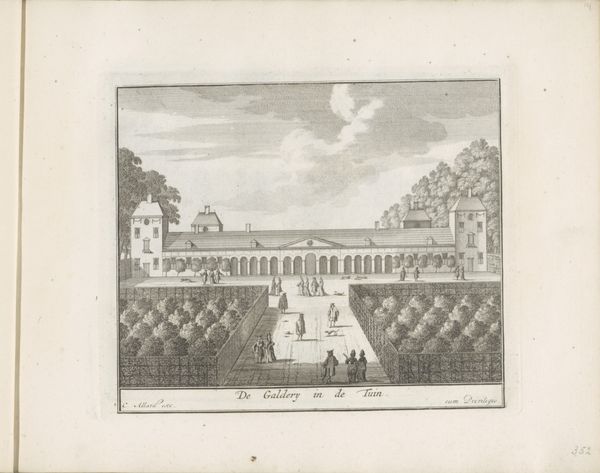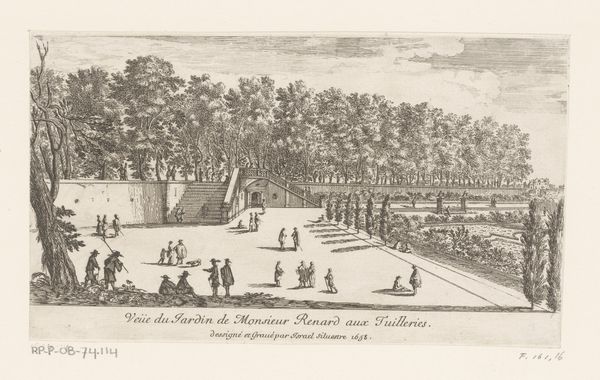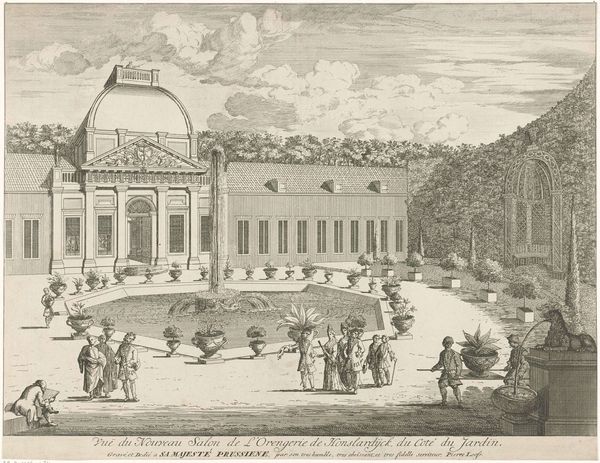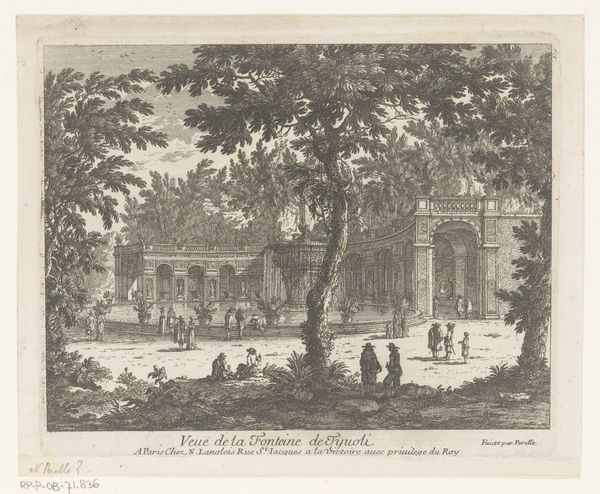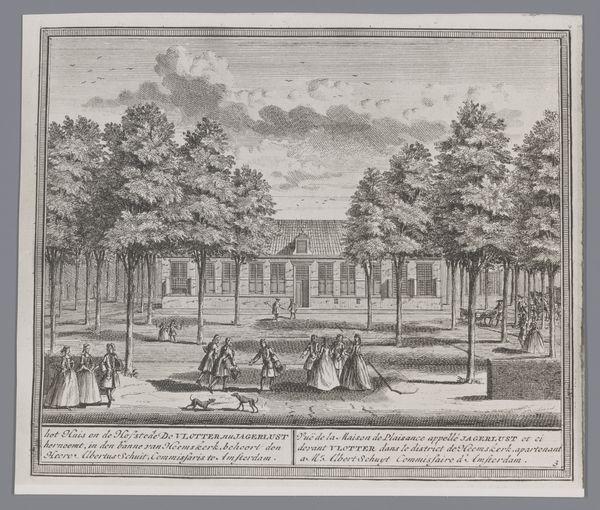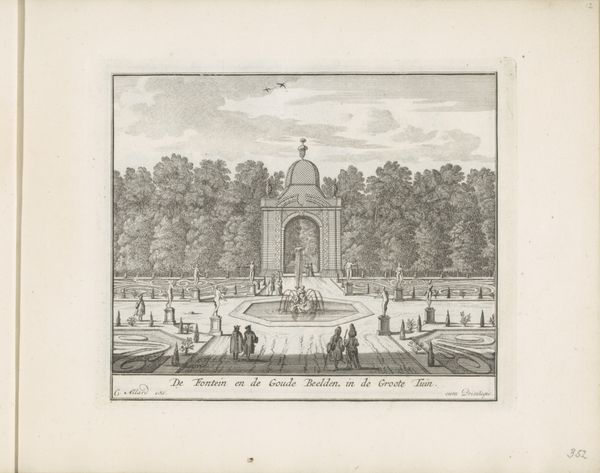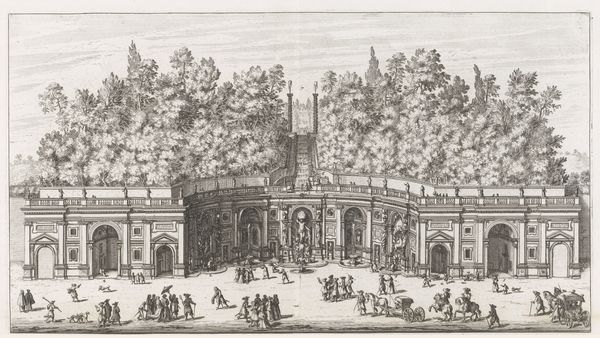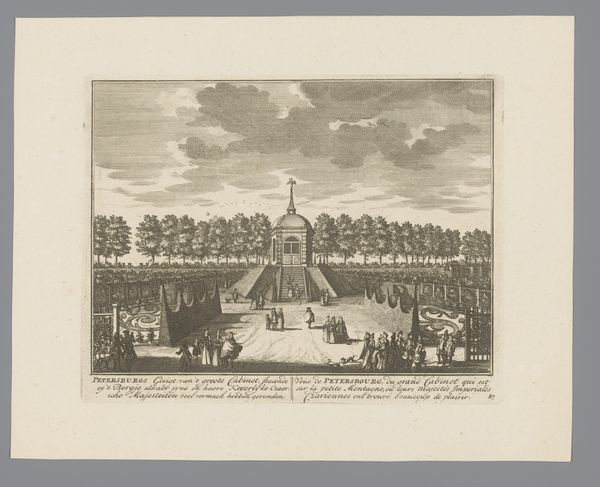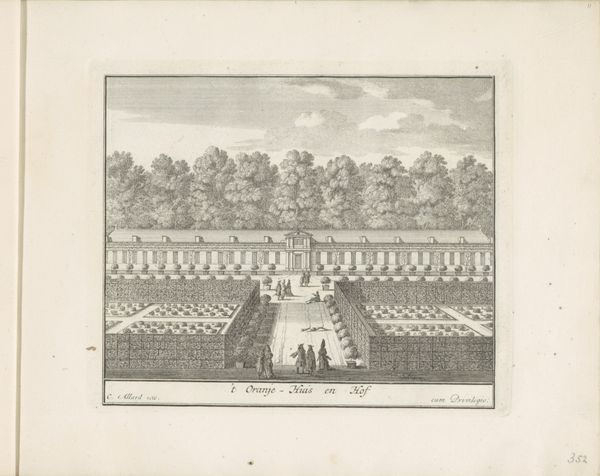
print, engraving, architecture
#
baroque
# print
#
old engraving style
#
landscape
#
cityscape
#
engraving
#
architecture
Dimensions: height 454 mm, width 573 mm
Copyright: Rijks Museum: Open Domain
Curator: This is an engraving titled "De colonnade in de tuin van Versailles," made around 1715 by Jean Baptiste (I) Scotin. Editor: It has an incredibly formal air to it, doesn't it? Like everyone is carefully posed in this theatrical space. I imagine whispered conversations and the rustle of silks. Curator: Exactly. The Colonnade itself was designed by Jules Hardouin-Mansart within the Gardens of Versailles, as a place for lavish entertainment. Scotin's print offers a glimpse into the Sun King's courtly world. Each figure looks so small, contained. What do you make of them? Editor: I find them to be a representation of power dynamics, almost pawns. These figures seem deliberately dwarfed by the architecture. You get the feeling the engraving captures the constraints, social and political, placed upon individuals within that era. There is an interesting relationship here between the elite and the masses and between individual freedom and collective identity. Curator: I see your point! The baroque style lends itself to such grand gestures and imposing structures. Personally, I find it interesting to focus on the medium itself. This is an engraving, right? So every single line, every nuance, had to be carved precisely. What commitment to craft! Editor: It is very interesting you mention the crafting itself. Yes, it reflects the regimented world. This deliberate hand-crafting aligns so beautifully with the baroque aesthetic and highlights the controlled environments favored by the ruling class. Every element contributes to a narrative of curated power, echoing throughout time. Curator: So, while I'm marveling at the delicate dance of light and shadow, you're digging into the socio-political implications, making sure it sparks some questions for those listening in the galleries. Editor: Absolutely, it's about connecting history and aesthetics. And thinking through, and feeling through how they speak to each other in the space. And, really, in the time. Curator: Indeed.
Comments
No comments
Be the first to comment and join the conversation on the ultimate creative platform.
